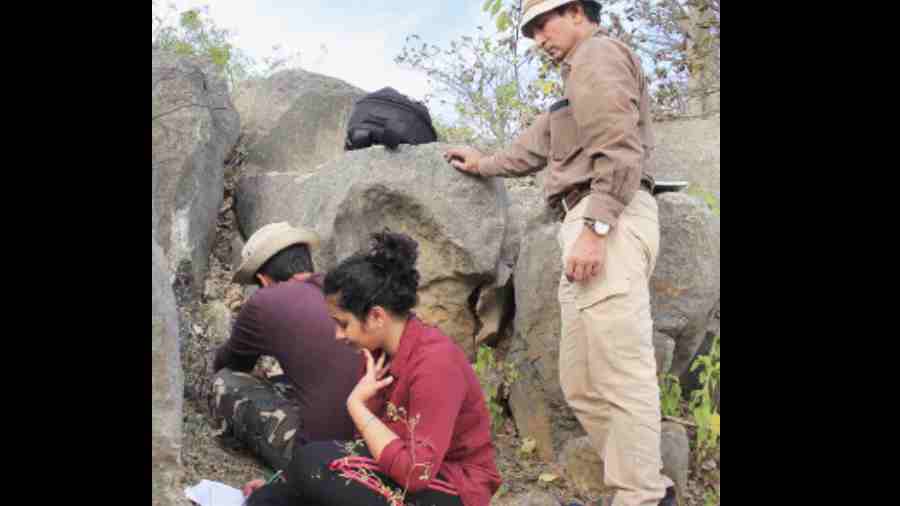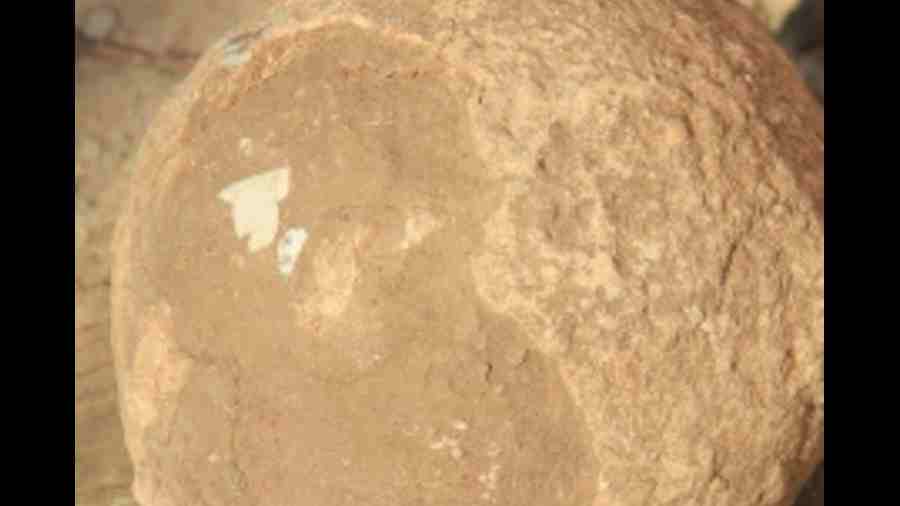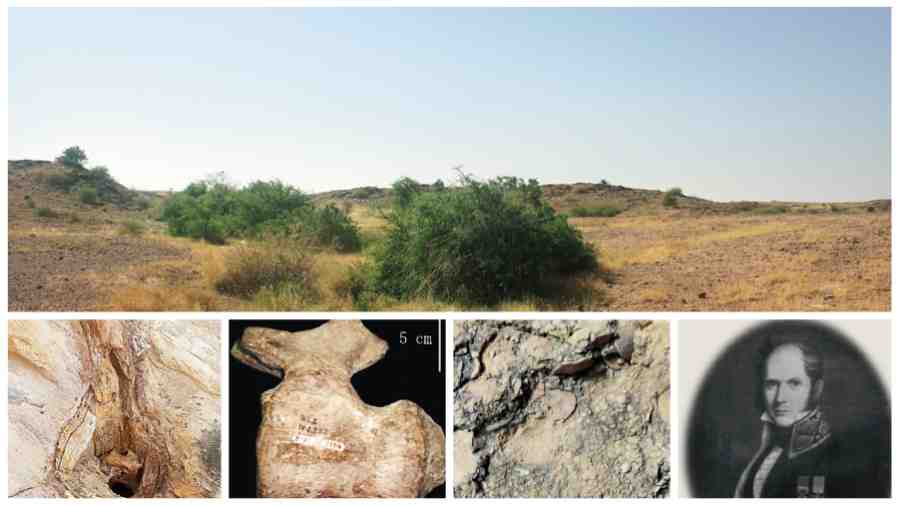Scientists have discovered 256 fossilised titanosaur eggs in central India, scattered across 92 nesting sites that they say provide fresh evidence for the herd-like behaviour but parental abandonment of hatchlings by these giant dinosaurs.
The nesting sites featuring an assortment of eggs — some intact, unbroken, others fragmented — found in rocks in Madhya Pradesh’s Dhar district were part of a vast dinosaur hatchery stretching east-west from Jabalpur to Ahmedabad about 66 million years ago, the scientists said.
The researchers from the University of Delhi have identified six egg species, indicating that central India had a greater diversity of titanosaurs — a longnecked dinosaur and among the largest creatures ever to walk the Earth — than known through skeletal remains.
“We know for sure from fossilised skeletal remains found earlier that at least three titanosaurs roamed central India,” Harsha Dhiman, a geologist and research scholar at the University of Delhi told The Telegraph. “This new cache of eggs supports the idea that India had more than three titanosaur species”.
The eggs are from a time close to the end of the dinosaur era triggered by a global mass extinction event about 65 million years ago.
The layouts of the nests suggest that the dinosaurs buried their eggs in shallow pits in soft, marshy sediments close to water, just like modern-day crocodiles. Dhiman and her colleagues have described their findings in a paper that appeared in the journal PLOS One on Wednesday.

Study team members (clockwise) GVR Prasad (standing), Harsha Dhiman, Vaibhav Miglani in Dhar district. Photo credit: Harsha Dhiman
The presence of dozens of nests in the same area indicates that dinosaurs exhibited colonial nesting behaviour like some modern-day birds. But the close spacing of the nests didn’t leave room for adult dinosaurs to take care of the hatchlings.
“The titanosaurs are huge and the adults wouldn’t have been able to manoeuvre themselves between the closely spaced nests,” said Guntupalli V.R. Prasad, professor of geology at the University of Delhi who supervised the 2016-2020 field investigations leading to the discovery.
“Parental care must have been absent — the hatchlings would have been left to fend for themselves,” Prasad said. “But this has also been known earlier from other dinosaur species from elsewhere.” Most of the eggs had hatched and some also have fossilised egg shells from their hatching windows around them.
But, Dhiman said, some eggs remain intact, unhatched possibly because they were submerged in the pits by water, leading to the death of embryos inside.












